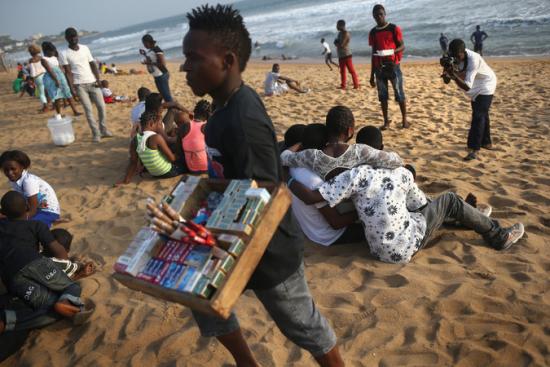You are here
NEW YORK TIMES by Normitsu Onishi Feb. 1, 2015
MONROVIA, Liberia — Life is edging back to normal after the deadliest Ebola outbreak in history....

FEAR FADING Beachgoers in Monrovia, Liberia, recently ravaged by Ebola. As fear of the virus ebbs, Liberians are slipping back into their daily rhythm. John Moore/Getty Images
Experts are trying to understand how the disease, which has defied the ominous predictions of the world’s top infectious disease researchers, appears to be extinguishing itself with surprising swiftness. In September, the United States Centers for Disease Control and Prevention had projected that, by Jan. 20, the outbreak could reach 1.4 million cases in Liberia and Sierra Leone alone, but by that date only 21,797 were recorded in all three countries.
While many have emphasized the enormous assistance hauled into the region by the United States and international organizations, there is strong evidence, especially here in Monrovia, that the biggest change came from the precautions taken by residents themselves.
“Fundamentally, this is about the extent to which societies change their behaviors, how they change them, and the speed at which they change them,” said Dr. David Nabarro, the United Nations special envoy on Ebola, who made frequent trips to the hot zone at the height of the epidemic. “I believe for various reasons people in Liberia changed quickly and dramatically. I believe Sierra Leoneans changed quickly in some areas and less quickly in some areas...”
Read complete story.



Recent Comments